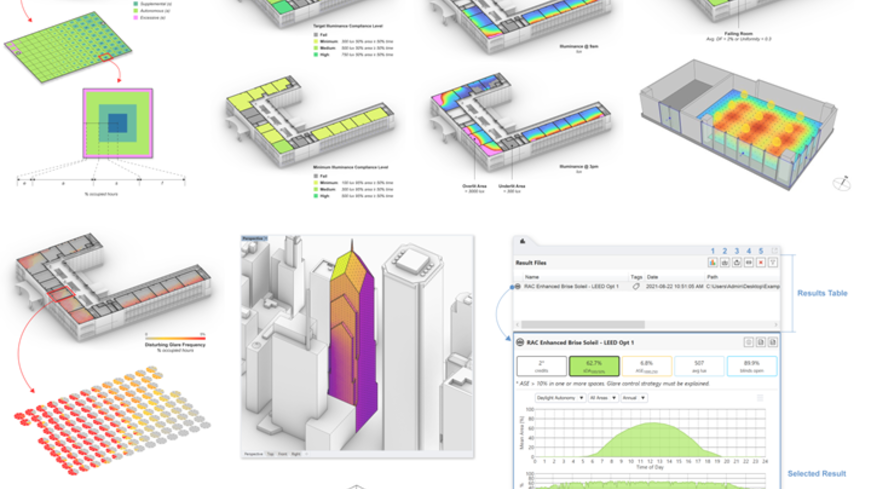
Simulation of Thermal, Visual, Indoor Air Quality, and Noise Comfort in Buildings
Simulation of thermal, visual, indoor air quality, and noise comfort in buildings are important methods to ensure the health and comfort of people living and working in buildings.
Thermal comfort simulation
Thermal comfort simulation is the process of using mathematical models to predict the level of human comfort in a given thermal environment. The model typically relies on factors such as temperature, humidity, wind speed, and solar radiation.
The purpose of thermal comfort simulation is to help building designers identify appropriate design solutions to ensure a comfortable thermal environment for users. This simulation can be used for different types of buildings, from residential to office, factory, hospital, etc.
Visual comfort simulation
Visual comfort simulation is the process of using mathematical models to predict the level of human comfort in a given lighting environment. The model typically relies on factors such as light intensity, light quality, light distribution, and light direction.
The purpose of visual comfort simulation is to help building designers identify appropriate design solutions to ensure a comfortable lighting environment for users. This simulation can be used for different types of buildings, from residential to office, factory, hospital, etc.
Indoor air quality (IAQ) simulation
Indoor air quality (IAQ) simulation is the process of using mathematical models to predict the quality of air in a given environment. The model typically relies on factors such as the concentration of pollutants in the air, wind speed, and air flow.
The purpose of IAQ simulation is to help building designers identify appropriate design solutions to ensure safe and healthy indoor air quality for users. This simulation can be used for different types of buildings, from residential to office, factory, hospital, etc.
Noise comfort simulation in buildings
Noise comfort simulation in buildings is the process of using mathematical models to predict the level of noise in a given environment. The model typically relies on factors such as the source of noise, the sound insulation level of surfaces and materials in the building.
The purpose of noise comfort simulation in buildings is to help building designers identify appropriate design solutions to ensure that the noise level in buildings does not affect the health and comfort of users. This simulation can be used for different types of buildings, from residential to office, factory, hospital, etc.
Thermal comfort, visual comfort, indoor air quality, and noise comfort simulations are important tools that help building designers create comfortable and healthy living and working environments for people.